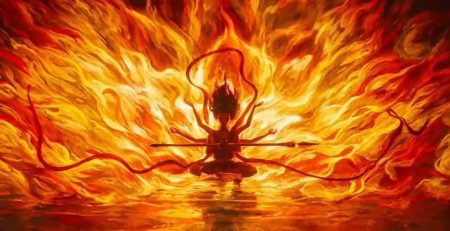
10
Apr
The Mystical Qi Lin: A Legendary Creature
In the far reaches of Chinese mythology, there exists a majestic creature known as the qi lin. With the body of a deer, the tail of an ox, the hooves of a horse, and the scales of a dragon, this mystical beast has long captivated the imagination of storytellers and artists alike. In this article, we delve into the rich history and symbolism of the qi lin, exploring its significance in Chinese culture and its enduring presence in the modern world. Join us on a journey into the realm of the qi lin, where legend and reality intertwine in captivating ways.
Table of Contents
- Qi Lin: The Mythical Chinese Creature
- Origins of the Qi Lin in Chinese Culture
- The Symbolism and Meaning of the Qi Lin
- Depictions of Qi Lin in Art and Literature
- The Qi Lin in Modern Chinese Society
- Q&A
- In Summary
Qi Lin: The Mythical Chinese Creature
Literally translated as “unicorn” in Chinese, the qi lin is a symbol of peace, harmony, and prosperity. It is believed to appear during times of peace and prosperity, signifying the benevolence of a ruler or the harmony of the universe. In traditional Chinese art and literature, the qi lin is often depicted as a gentle and benevolent creature, embodying the virtues of kindness, righteousness, and compassion.
- The qi lin is a symbol of peace and prosperity in Chinese culture.
- It is often associated with royalty and the arrival of great leaders.
- This mythical creature is depicted as a gentle and benevolent being, embodying virtuous qualities.
Origins of the Qi Lin in Chinese Culture
The qi lin, also known as the Chi Lin, is a mythical creature in Chinese culture. This majestic beast is said to appear only during the reign of a virtuous ruler or the birth of a great sage. However, unlike its Western counterpart, the unicorn, the qi lin is a composite creature, with the body of a deer, the tail of an ox, hooves like a horse, and a single horn on its head.
The origins of the qi lin can be traced back to ancient Chinese mythology and folklore. According to legend, the qi lin was first sighted over 2,000 years ago during the reign of the Yellow Emperor, one of the legendary Three Sovereigns and Five Emperors of ancient China. It is believed that the appearance of the qi lin symbolizes prosperity, success, and peace, and is often regarded as a harbinger of good fortune.
| Key Characteristics of the Qi Lin | Symbolism |
|---|---|
| Body of a deer, tail of an ox, hooves like a horse, and single horn on its head | Prosperity, success, and peace |
The Symbolism and Meaning of the Qi Lin
Qi Lin is a mythical creature in Chinese culture that holds great symbolism and meaning. This legendary creature is believed to bring prosperity, success, and protection to those who encounter it. The Qi Lin is often depicted as a majestic creature with features resembling different animals, such as the body of a deer, the tail of an ox, and the hooves of a horse.
One of the most significant symbolic meanings of the Qi Lin is its representation of good fortune and prosperity. In Chinese mythology, it is said that the Qi Lin only appears during the reign of a wise and benevolent ruler, symbolizing a period of peace and prosperity for the people. Additionally, the Qi Lin is also associated with protection and is believed to ward off evil spirits and bring harmony to its surroundings. Its gentle and peaceful nature makes it a revered symbol of virtue and righteousness in Chinese culture.
Overall, in Chinese culture are deeply rooted in the beliefs of prosperity, protection, and virtue. Its presence brings a sense of auspiciousness and hope, making it a cherished symbol in various aspects of Chinese society, including art, architecture, and even modern-day celebrations.
Depictions of Qi Lin in Art and Literature
Throughout history, the qi lin has been a prominent figure in both art and literature across various cultures in Asia. The qi lin, also known as the “Chinese unicorn”, is a mythical creature that symbolizes prosperity, longevity, and purity.
In art, the qi lin is often depicted as a creature with the body of a deer, the head of a dragon, the hooves of a horse, and the scales of a fish. This unique combination of features has made the qi lin a popular subject for artists, who have portrayed the creature in various forms including paintings, sculptures, and tapestries. These depictions of the qi lin often showcase the creature in a benevolent light, representing good fortune and protection.
Similarly, in literature, the qi lin is a recurring symbol of auspiciousness and righteousness. In many stories and poems, the qi lin is portrayed as a guardian or a protector, often appearing to those who are in need of guidance or assistance. The qi lin’s presence in literature serves as a source of inspiration and hope for readers, as it embodies the ideals of morality and compassion.
The Qi Lin in Modern Chinese Society
Qi Lin, also known as qilin, is a mythical creature deeply rooted in Chinese culture and folklore. A symbol of good luck, prosperity, and longevity, the qi lin is often associated with wisdom and benevolence. Despite its mythical origins, the qi lin continues to hold significance in modern Chinese society, making appearances in various aspects of contemporary life.
In Chinese art and literature, the qi lin is a popular motif, appearing in paintings, sculptures, and poetry. Its distinctive appearance, with the body of a deer, the head of a dragon, scales like a fish, and hooves like a horse, makes it a visually striking symbol. The qi lin’s presence in art serves as a reminder of traditional beliefs and values, as well as a source of inspiration for modern artists seeking to reinterpret and reimagine its significance.
Q&A
Q: What is a qi lin?
A: A qi lin is a mythical creature in Chinese lore, often called the “Chinese unicorn” due to its auspicious nature.
Q: What does a qi lin look like?
A: A qi lin is often depicted as a combination of different animals, with the body of a deer, the tail of an ox, the hooves of a horse, and the scales of a dragon.
Q: What is the significance of a qi lin?
A: Qi lin are considered to be symbols of good fortune, prosperity, and longevity in Chinese culture.
Q: Are there different variations of qi lin?
A: Yes, there are different interpretations and variations of qi lin in other East Asian cultures, such as the ”kirin” in Japan and the “girin” in Korea.
Q: How is a qi lin depicted in art and mythology?
A: Qi lin are often depicted in traditional Chinese art and literature as gentle and benevolent creatures, appearing during times of peace and prosperity.
Q: Are there any real-life inspirations for the qi lin?
A: Some historians believe that the qi lin may have been inspired by real animals, such as the giraffe, due to its foreign and exotic appearance in ancient China.
Q: How is the qi lin celebrated in modern times?
A: The qi lin continues to be an important symbol in Chinese culture, often depicted in festivals, artwork, and traditional ceremonies as a representation of good fortune and positivity.
In Summary
In conclusion, the qi lin is a mythical creature that has captured the imagination of people for centuries. With its unique combination of features and its symbolization of prosperity and good fortune, the qi lin has embedded itself in various cultures and continues to hold a special place in folklore and legend. Whether seen as a guardian of the sacred or a bringer of luck, the qi lin remains a fascinating and enigmatic creature whose presence continues to inspire wonder and awe. As long as humans continue to seek out the extraordinary and the mysterious, the qi lin will remain a captivating figure in our collective consciousness.









